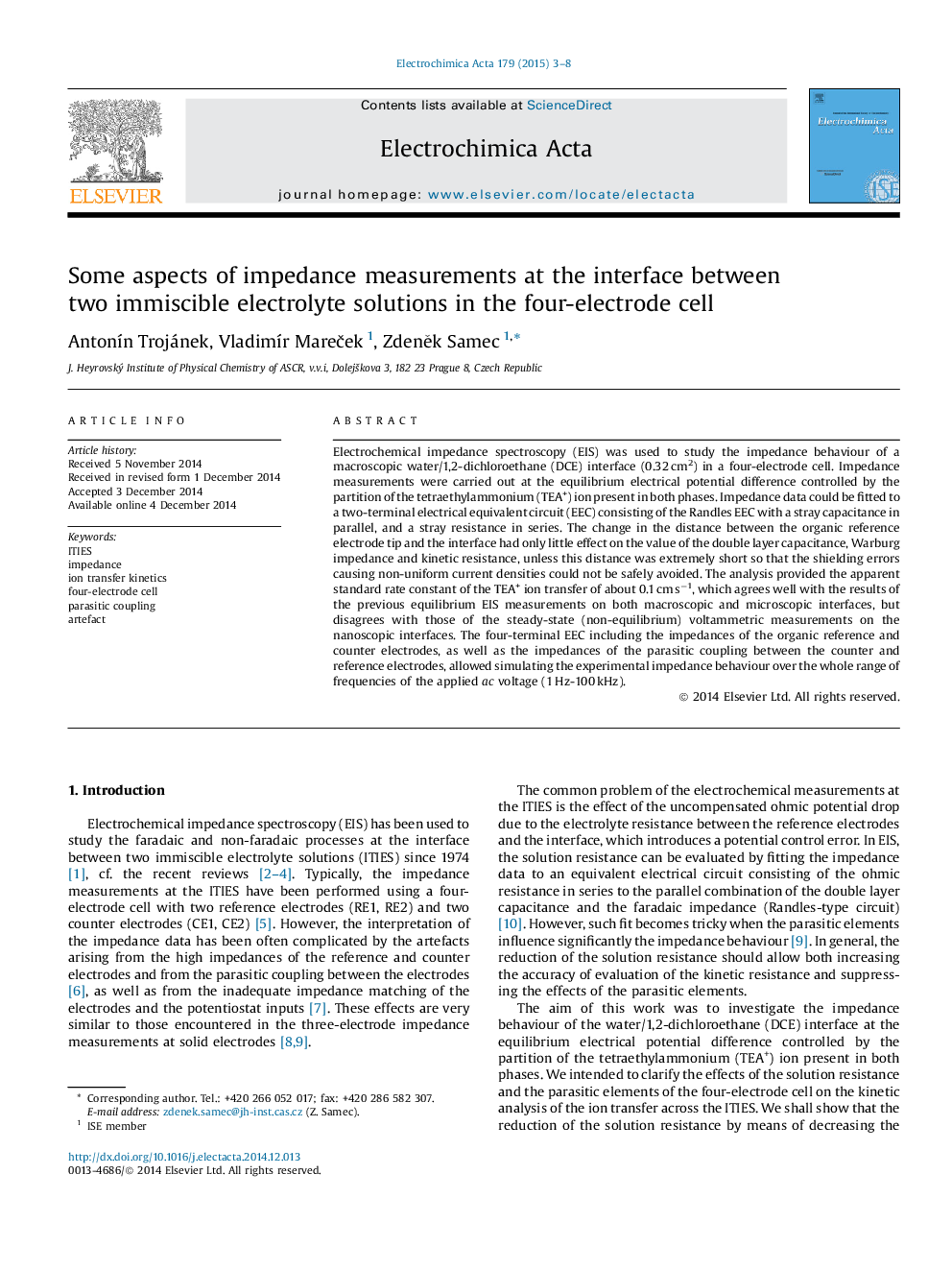| Article ID | Journal | Published Year | Pages | File Type |
|---|---|---|---|---|
| 6610542 | Electrochimica Acta | 2015 | 6 Pages |
Abstract
Electrochemical impedance spectroscopy (EIS) was used to study the impedance behaviour of a macroscopic water/1,2-dichloroethane (DCE) interface (0.32 cm2) in a four-electrode cell. Impedance measurements were carried out at the equilibrium electrical potential difference controlled by the partition of the tetraethylammonium (TEA+) ion present in both phases. Impedance data could be fitted to a two-terminal electrical equivalent circuit (EEC) consisting of the Randles EEC with a stray capacitance in parallel, and a stray resistance in series. The change in the distance between the organic reference electrode tip and the interface had only little effect on the value of the double layer capacitance, Warburg impedance and kinetic resistance, unless this distance was extremely short so that the shielding errors causing non-uniform current densities could not be safely avoided. The analysis provided the apparent standard rate constant of the TEA+ ion transfer of about 0.1 cm sâ1, which agrees well with the results of the previous equilibrium EIS measurements on both macroscopic and microscopic interfaces, but disagrees with those of the steady-state (non-equilibrium) voltammetric measurements on the nanoscopic interfaces. The four-terminal EEC including the impedances of the organic reference and counter electrodes, as well as the impedances of the parasitic coupling between the counter and reference electrodes, allowed simulating the experimental impedance behaviour over the whole range of frequencies of the applied ac voltage (1 Hz-100 kHz).
Related Topics
Physical Sciences and Engineering
Chemical Engineering
Chemical Engineering (General)
Authors
AntonÃn Trojánek, VladimÃr MareÄek, ZdenÄk Samec,
